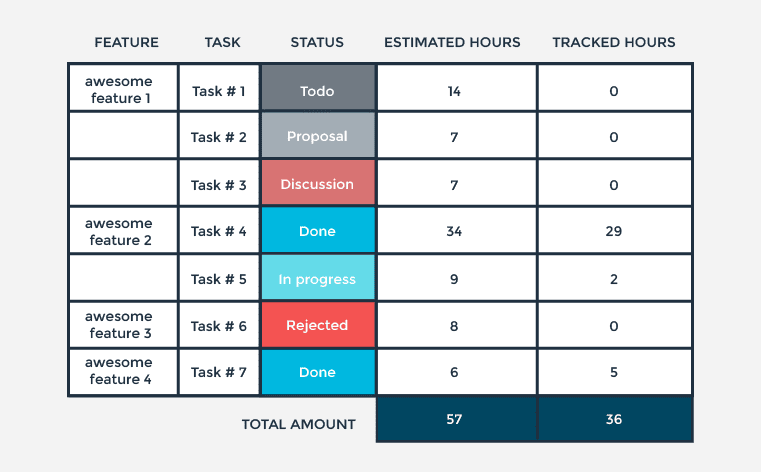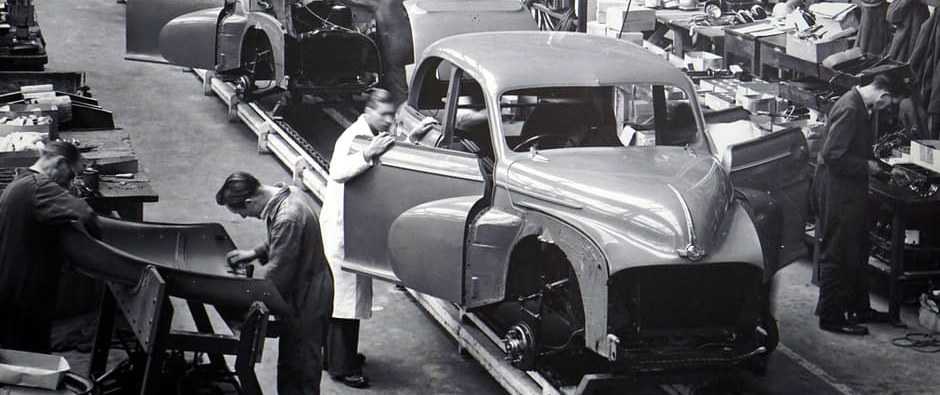The Time & Materials pricing model puts you in the driver's seat.
Recently, many software development agencies have switched from Fixed Price to a Time and Materials method of billing. Reluctant customers are still quite apprehensive about the idea of no final price being agreed upon at the beginning of the outsourcing partnership. Especially those with no technical background. Or the ones who just started their adventure with software development. Thus, suggesting a Time and Materials pricing model is a challenge. Even when it’s proven to be much more profitable for the ordering party.
This article shows you our perspective on Time and Materials and Fixed Price models. It also guides you in understanding of some of the benefits of the Time and Materials method.
HOW IS THE COST ESTIMATED IN TIME AND MATERIALS PRICING MODEL?
To get the ball rolling, in the Time and Materials model we first define the specification of the work that needs to be done and estimate the approximate cost. Once we sign a contract with the customer, we create and regularly update a spreadsheet with a to-do list and tasks' statuses that the customer can see.
This document contains:
- a list of features divided into tasks,
- status of each task: eg.: to do, to review, propositions etc.,
- the number of hours each task is estimated to take,
- the final number of hours spent.
Using this spreadsheet, which the customer have access to, makes the whole development process transparent. The customer can propose changes in the order, pace of the development or make changes in scope and everything is visible and clear right away for both sides.
Here is how the simplified version of such spreadsheet looks like:
To keep track of the hours spent, we use Jira software. It assists us in project management and enables report generation.
As our approach to estimation is pretty pessimistic, we tend to give higher estimates. Our clients are happy to see a final cost that is lower than the estimation. With the leftover budget, they can use on some advancements, future tasks, etc., or save it for a rainy day. You can read more about price estimations, in the post our CEO wrote some time ago.
IDEAS APPRECIATED, CHANGES IN SCOPE POSSIBLE
We live in a fast-paced society where changes are the only constant. Most of the projects we take part in need to be done immediately. Companies constantly need to make adjustments and think on their feet to be ahead of the curve.
The Time and Materials pricing method is “friendly” when it comes to sudden changes in scope. Adjusting the scope on the go is possible. Especially if the reason is the need to be the first on the market with certain functionality, or a need to adjust after hearing users’ feedback.
This ability to adjust on the go makes working with the Time and Materials model quite enjoyable. It allows us to be open to new ideas, enhancements, or simplifications - which also may come from our side.
As we continually update our technological knowledge we're happy when we can propose something that could work better for the client. Also, since we create software for different branches, we can utilize ideas and solutions used in different industries. This increases our creativity and quickly remedy problems.
With the client seeing how changes influence the budget, they can give propositions the thumbs up or down. They are in the driver’s seat.
You see, the Fixed Price model does not allow for such a situation to occur.
In the Fixed Price model, as a client you are pretty much left out of the process. You need to sit tight, waiting until the development is done. To add any changes you will be sent back to the drawing board. Again you will need another business analysis, specification, and contract.
Of course, this is referring to the original model of the Fixed Price method. It does happen that you can negotiate and change things along the process. But, it might create a mess, extra paperwork, and constant negotiations instead of a progress.
TIME AND MATERIALS = ENGAGEMENT
Our favorite reason that makes working in a Time and Materials arrangement more enjoyable is that it keeps both sides engaged. In T&M model the team really goes to town with the development. While operating in a Time and Materials model, communication and the exchange of ideas occur frequently.
That makes us feel like we're apart of something bigger. Something that excites us and motivates us to deliver the best solution. Having problems to solve in terms of development is a real shot in the arm and makes everyone in our team motivated.
The summary is this: in the Time and Materials model new ideas are beneficial for both sides. In the Fixed Price model the development team will avoid coming up with new ideas and will not be eager to change the plan. In the Time and Materials model one gets not only time, but engagement resulting from autonomy, mastery which results in new ideas and a more caring development team.
From our perspective, in the Time and Materials model, we care for the product more because we feel that we have a real influence on the outcome. And that we can be a part of something bigger- not only used for doing some specific tasks.
PREDICTABLE UNPREDICTABILITY IN SOFTWARE DEVELOPMENT
Throughout the years we have worked on over 60 custom software development projects and a few in-house projects. This experience makes us acutely aware that the development process is rather unpredictable. In good and bad ways.
The work on a particular task can be estimated for an approximate amount of hours. And as it turns out it can get done ten times faster (no exaggeration here)... or ten times slower.
This unpredictability in the software development process makes estimations a shot in the dark. You could think that the experience of the software company eliminates such uncertainty. But it is actually the opposite. The more experience one has, the more aware one is of the external factors that can influence project development.
FIXED PRICE = LONG PROCESS
Another downside of the Fixed Price model is that it makes the process much longer than it should be. We don't agree to take on projects that don't have a proper analysis and specifications ready on the Fixed Price model. If both are missing, we ask the client if they would like us to conduct the study. If they don't want that then the Time and Management model is the only reasonable way to start the relationship.
And to compare, here is how the same project's timeline in the Time and Materials would look like:
Notice that the whole process is shorter in the Time and Materials model.
DO YOU KNOW EXACTLY HOW YOUR INTERNET APPLICATION IS GOING TO LOOK LIKE?
If you and the vendor have a common general idea about the exact outcome, and there is a thorough business analysis before along with specification, etc. then the estimation is easy and logical to make. In this case, the Fixed Price model can be used with an addition of some % of a risk of unexpected changes, etc. that the vendor adds to the estimation.
However, when there is uncertainty about the exact outcome you want to achieve, and you are only 50-75% sure how you would like the product to look like, then think about adopting a Time and Materials model. In this case, the Time and Materials model would enable you to view progress on the project while allowing you to keep your fingers on the pulse of your target audience.
It also never hurts to have software developers extremely involved and active in your project. This will allow more space for creative solutions, motivated problem solving and delivering more polished product at the end.
Thanks to Piotr Gołofit (CEO) for reading drafts of this article, giving ideas and sharing knowledge.







